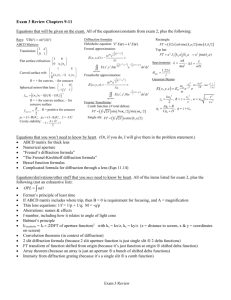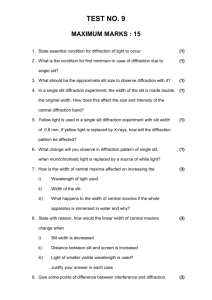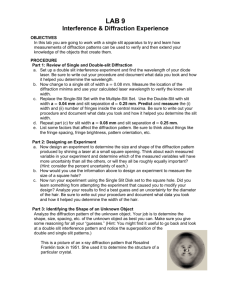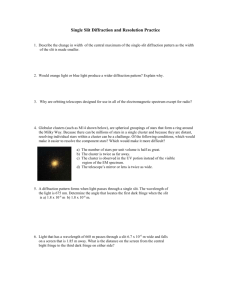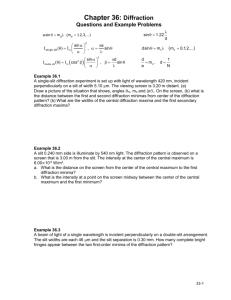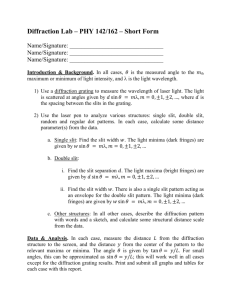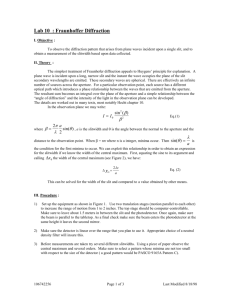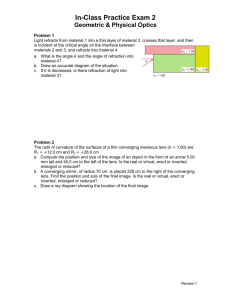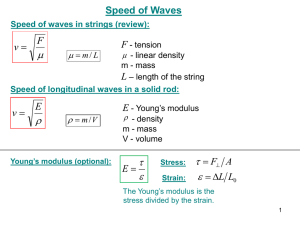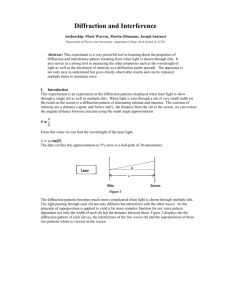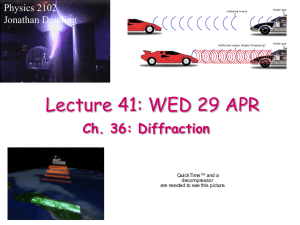Diffraction - kasphysics
advertisement
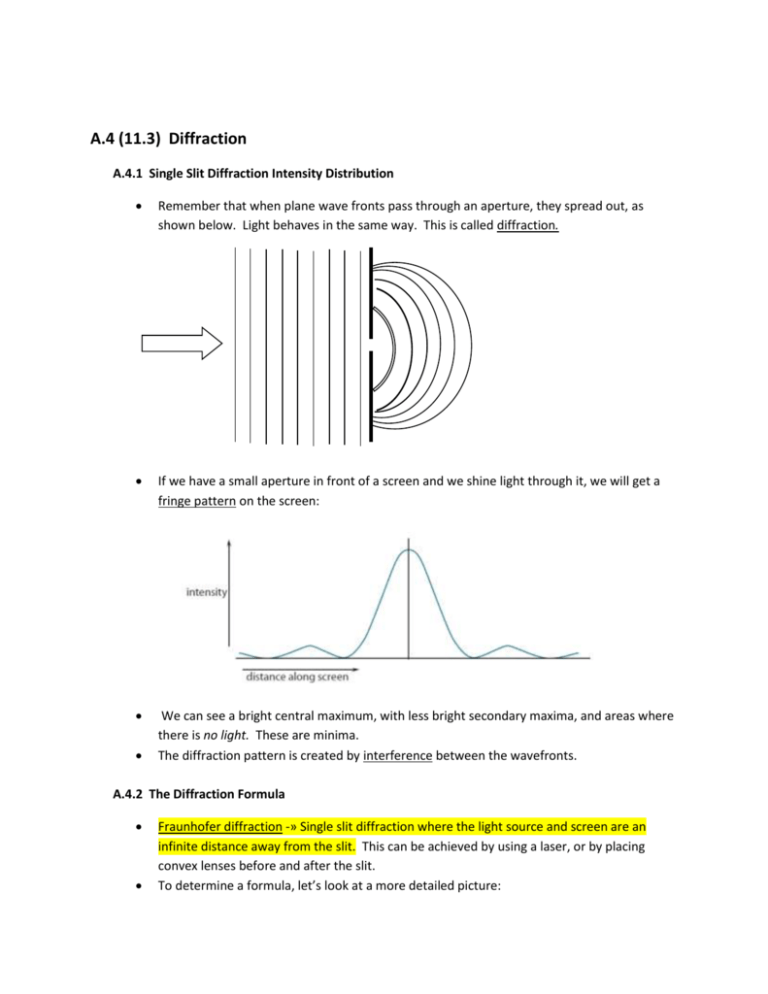
A.4 (11.3) Diffraction A.4.1 Single Slit Diffraction Intensity Distribution Remember that when plane wave fronts pass through an aperture, they spread out, as shown below. Light behaves in the same way. This is called diffraction. If we have a small aperture in front of a screen and we shine light through it, we will get a fringe pattern on the screen: We can see a bright central maximum, with less bright secondary maxima, and areas where there is no light. These are minima. The diffraction pattern is created by interference between the wavefronts. A.4.2 The Diffraction Formula Fraunhofer diffraction -» Single slit diffraction where the light source and screen are an infinite distance away from the slit. This can be achieved by using a laser, or by placing convex lenses before and after the slit. To determine a formula, let’s look at a more detailed picture: b is the width of the slit, and λ is the wavelength. The first minimum, at point P, is the point at which the ray from the top of the slit and the ray from the bottom of the slit will cancel. This means their phase difference will be λ. Let’s determine a relationship between b and d. Using simple geometry, we find that 𝜆 = 𝑏 𝑠𝑖𝑛𝜃1 As long as f»d, we can assume that the line XP ≈ f, so 𝑑 = 𝑓 sin 𝜃2 Also, in the Fraunhofer situation, f is very large. For these situations, we can assume that 𝜃1 = 𝜃2 . Therefore, 𝜆 = 𝑏 sin 𝜃 𝑎𝑛𝑑 𝑑 = 𝑓 sin 𝜃 Also, for very small θ, sin 𝜃 ≈ 𝜃 , so 𝜆 = 𝑏𝜃 𝑎𝑛𝑑 𝑑 = 𝑓𝜃 This yields the equation 𝑑= 𝜆𝑓 𝑏 For the diffraction effects to be visible, d and λ must be of similar order. The equation above is for a square aperture. Please note that for a circular aperture, you may use this equation: 1.22𝜆 𝜃= 𝑏 (ex1) Light from a laser is used to form a single slit diffraction pattern. The width of the slit is 0.10 mm and the screen is placed 3.0 m from the slit. The width of the central maximum is measured as 2.6 cm. Calculate the wavelength of the laser light? Since the screen is a long way from the slit we can use the small angle approximation such that the f is equal to 3.0 m. The half-width of the central maximum is 1.3 cm so we have 𝜆= (1.3 𝑥 10−2 ) 𝑥 (1.0 𝑥 10−4 ) 3.0 To give λ = 430 nm. This example demonstrates why the image of a point source formed by a thin converging lens will always have a finite width. (ex2) In the following diagram, parallel light from a distant point source (such as a star) is brought to focus on the screen S by a converging lens (the lens is show as a vertical arrow). The focal length (distance from lens to screen) is 25 cm and the diameter of the lens is 3.0 cm. The wavelength of the light from the star is 560 nm. Calculate the diameter of the diameter of the image on the screen. The lens actually acts as a circular aperture of diameter 3.0 cm. The half angular width of central maximum of the diffraction pattern that it forms on the screen is 𝜃= 1.22𝜆 1.22 𝑥 5.6 𝑥 10−7 = = 2.3 𝑥 10−5 𝑟𝑎𝑑 𝑏 3.0 𝑥 10−2 The diameter of the central maxima is therefore 25 × 10-2 × 2.3 × 10-5 = 5.7 × 10-6 m. Although this is small, it is still finite and is effectively the image of the star as the intensity of the secondary maxima are small compared to that of the central maximum. HOMEWORK: Physics 3rd ed. Pg 303 11.3 # 1-2

